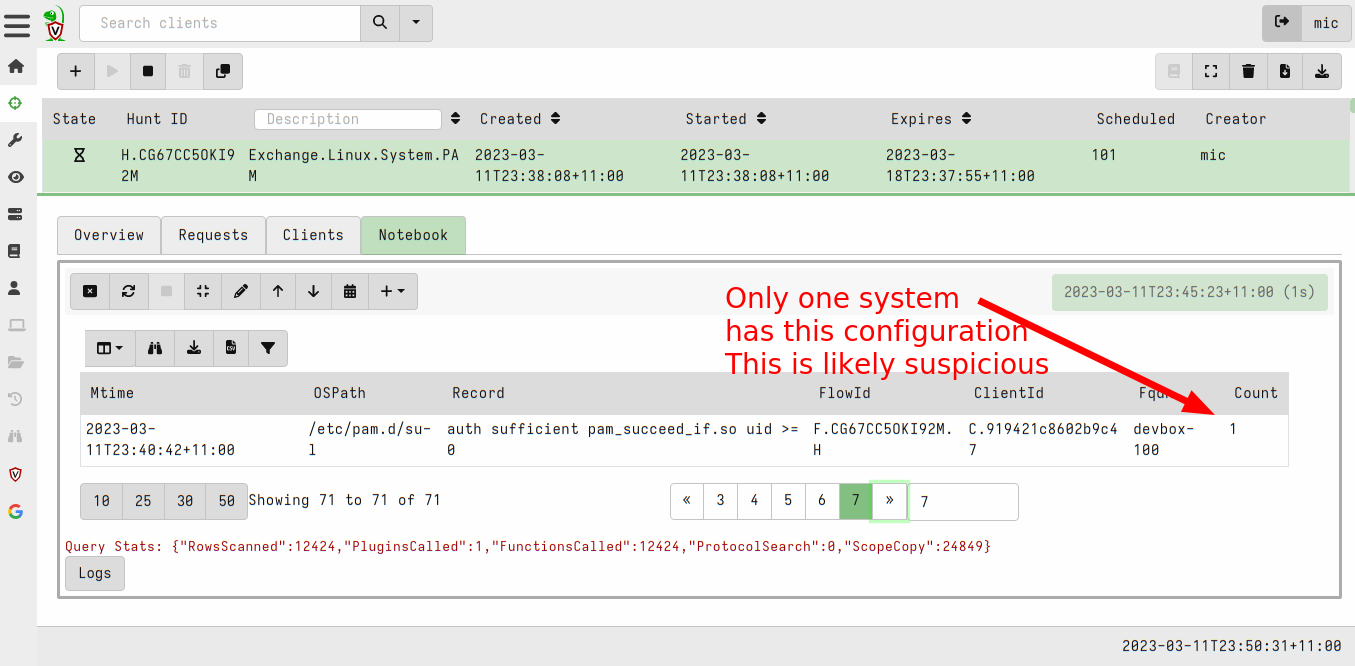<!-- .slide: class="content" --> ## Artifact of Autumn 77 ### PAM abuse https://infosec.exchange/@weslambert/109475612494526691  --- <!-- .slide: class="content" --> ## The artifact exchange ### Sharing the knowledge 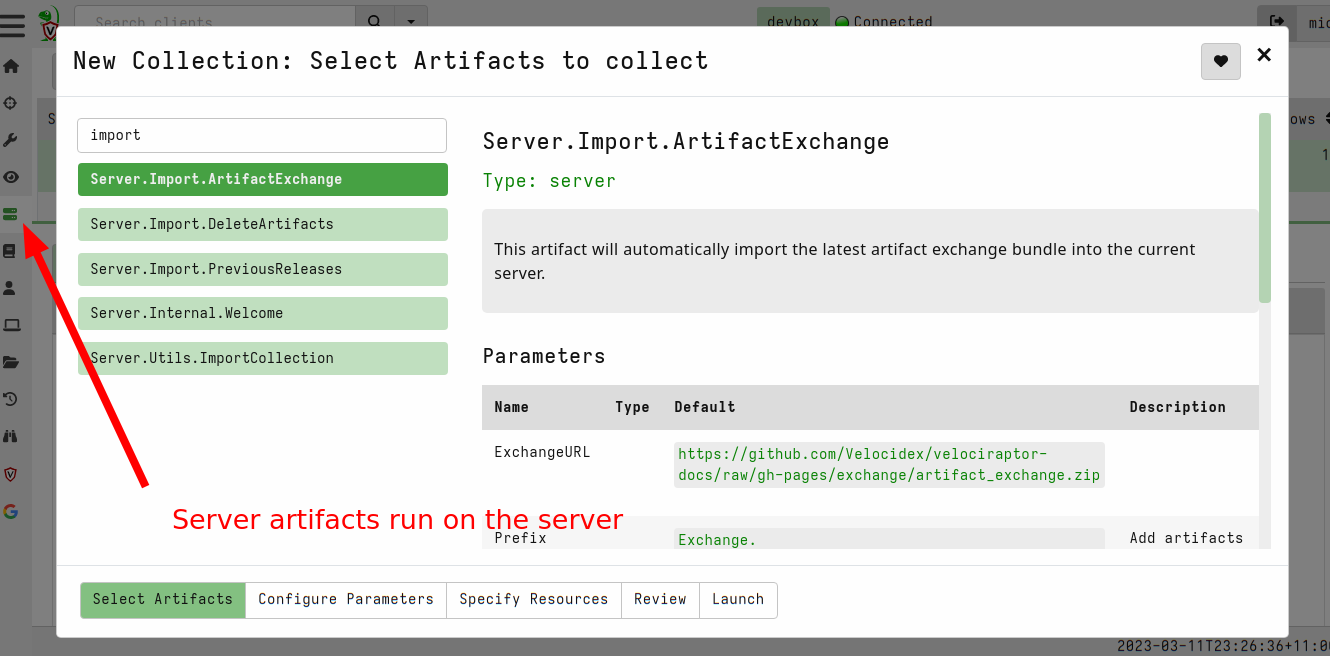 --- <!-- .slide: class="content" --> ## The artifact exchange ### Sharing the knowledge 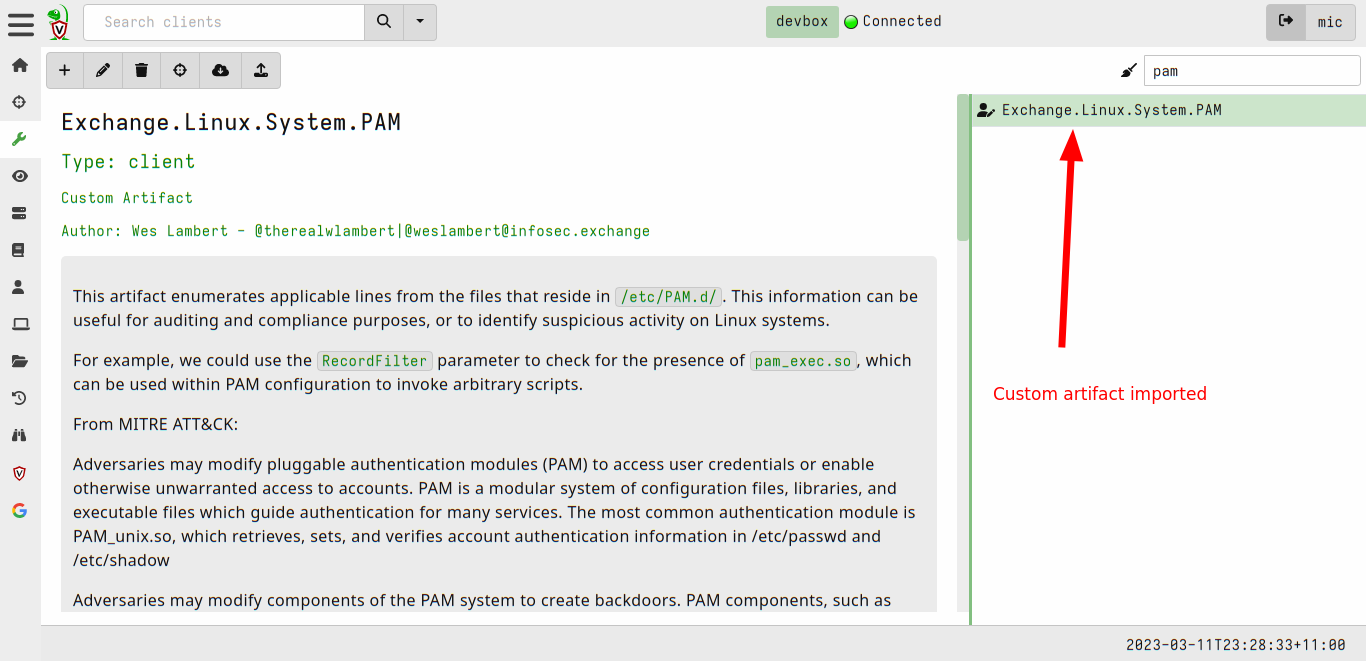 --- <!-- .slide: class="content" --> ## Collecting the artifact What is normal? 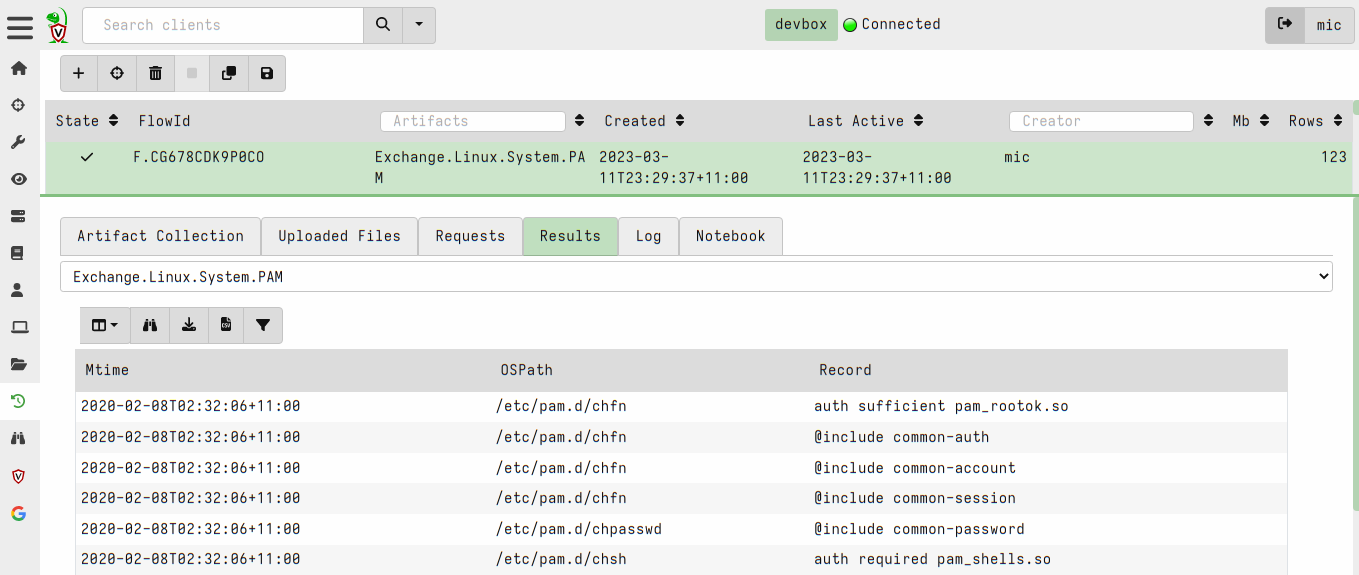 --- <!-- .slide: class="content" --> ## Hunting ### Collecting artifacts from many hosts Hunting is Velociraptor's strength - collect the same artifact from thousands of endpoints in minutes! * Two types of hunts: * Detection hunts are very targeted aimed at yes/no answer * Collection hunts collect a lot more data and can be used to build a baseline. --- <!-- .slide: class="content" --> ## Exercise ### Baseline pam configuration For this exercise we start a few more clients. Velociraptor's pool client can simulate multiple clients easily. ```text $ cd /tmp/ $ velociraptor --config client.config.yaml pool_client --number 100 ``` This starts 100 virtual clients so we can hunt them --- <!-- .slide: class="content" --> ## Exercise ### Stacking hunt results. For this exercise, we simulate 100 clean machines, and 1 compromised machine. 1. Stop the webshell server 2. Start 100 pool clients 3. Create a hunt for `Exchange.Linux.System.PAM` --- <!-- .slide: class="content" --> ## Exercise ### Hunting 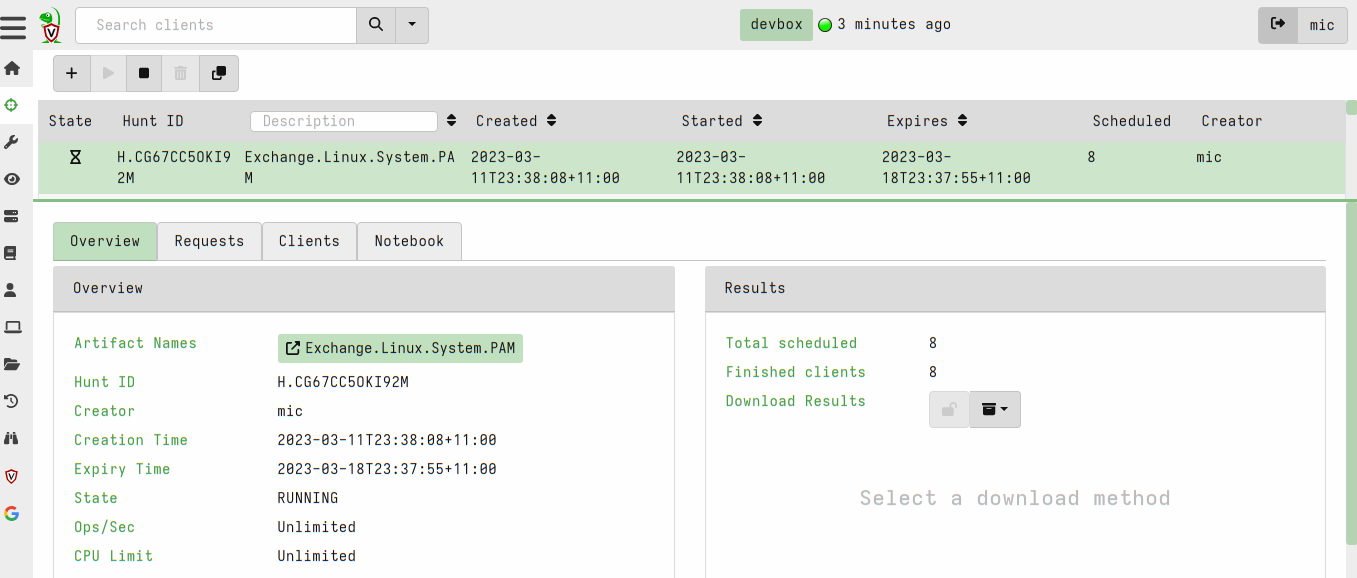 --- <!-- .slide: class="content" --> ## Exercise ### Stacking hunt results. When the hunt completes: 4. Stop the pool client 5. Add the following line to `/etc/pam/su-l` ``` auth sufficient pam_succeed_if.so uid >= 0 ``` 6. Start the pool client again with 101 clients. * This causes the new client to join the hunt and detect the webshell. --- <!-- .slide: class="content" --> ## Identifying anomalies. * Anomalies are things that are not usual compared to the rest of the network. * One tool for detecting anomalies is called `Stacking` - in VQL done using the `GROUP BY` keyword. * Stacking is useful when looking at something that should be common across most systems (e.g. OS configuration) --- <!-- .slide: class="content" --> ## Identifying anomalies. ### Count and group by PAM config lines ```sql SELECT *, count() AS Count FROM source(artifact="Exchange.Linux.System.PAM") GROUP BY Record ORDER BY Count DESC ``` --- <!-- .slide: class="content" --> ## Identifying anomalies. ### Count and group by PAM config lines 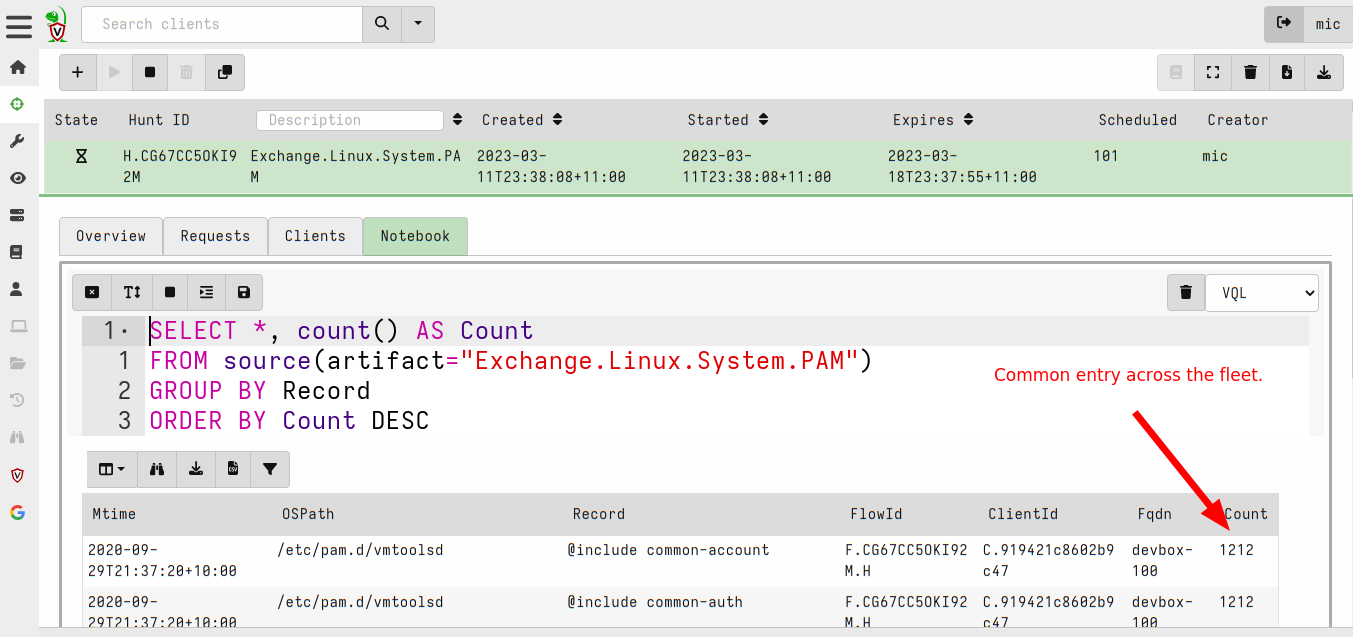 --- <!-- .slide: class="content" --> ## Stacking ### Identify the suspicious entries 